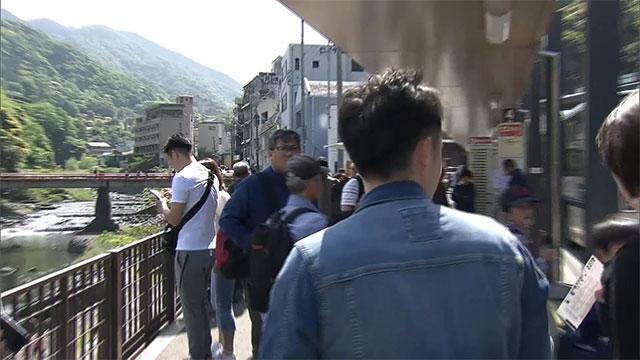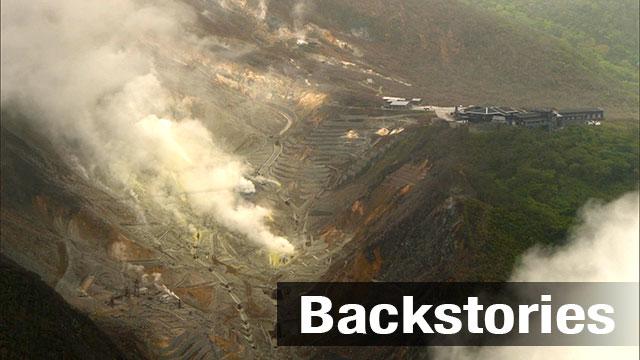The agency raised the alert level a spate of volcanic earthquakes in the area over the weekend. 74 had been observed as of 3 p.m. Monday.
The agency says small, shallow quakes have been increasing in areas around Mount Hakone since mid-March.
Town officials are now restricting travel near the crater and are blocking access with fences.
The Hakone Ropeway operator has suspended services and a temporary bus is running instead.
A man visiting with his wife said they felt tremors during a meal. He said he was disappointed because he had been hoping to get a view of Mount Fuji from the Hakone crater.
An Australian tourist said he had been planning to ride the ropeway but will now have to find another way to take in the region's nature.

Local businesses have responded quickly to the situation, taking lessons from an eruption four years ago. They say they learned then how vital it is to provide guests with information as quickly and accurately as possible.
The local hotel association has drawn up a manual for hotel and inn operators on how to quickly distribute the necessary evacuation information to guests in the case of an eruption.
On May 2, 2015, the Meteorological Agency issued a warning for a minor eruption at Mount Hakone, raising the alert level to two. An evacuation order was issued for the areas near the Owakudani crater for the first time ever. But with no protocol on how to share information, local businesses were unprepared.

This time, the Meteorological Agency is warning that large volcanic rocks could fall around the crater in the event of an eruption. Officials are urging people to follow the instructions issued by their local municipalities and stay clear of high-risk areas.
As of now, extra caution is advised only for certain areas. Some of the region's most popular destinations, such as Lake Ashinoko, remain unaffected.

The Governor of Kanagawa Prefecture, Yuji Kuroiwa, issued a statement, reminding people to keep up to date with the latest information. But he also urged them to remain calm, saying the warning was only in effect for areas near the crater.
Kazutaka Mannen, a senior researcher at the Hot Springs Research Institute of Kanagawa Prefecture, says he thinks the situation is not serious enough to affect the region's tourism. But he says people should remain vigilant and be prepared for the worst.

